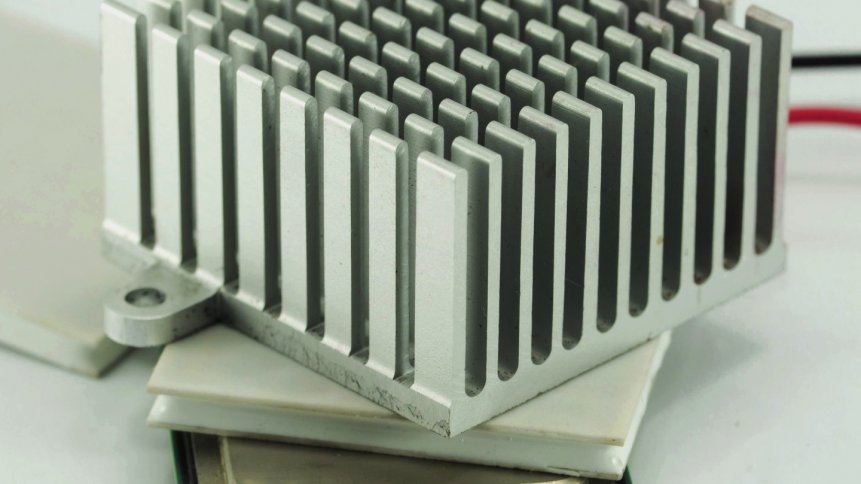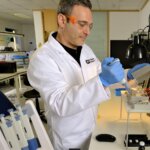Prospects for thermoelectric materials heating up

Rising fuel prices are a headache for businesses, but the big numbers do give alternative technologies a chance to re-join the conversation on energy mixes. A case in point is thermoelectric power. Interestingly, insects such as the oriental hornet (Vespa orientalis) have been harnessing the interplay between electrical power and heat management for years. The hornet possesses a clever ridged-shaped abdomen, which – aided by sunlight absorbing pigment – gives them a technical edge on their competitors. “It appears that the bumps on the hornet’s exoskeleton provide a thermoelectric current that cools them by 2-6 degC,” writes Raffeal Jovine in ‘Light to Life’ – a fascinating read on the hidden powers of photosynthesis.
Humans have taken a bit longer to pick up on the advantages of thermoelectricity, which – as the hornets demonstrate – can be used for solid-state cooling. The effect can also be run in reverse to scavenge electricity from heat that would otherwise go to waste. Or, if comprising collectors placed above a burner, form a dedicated power generator with no moving parts – a setup that can be fuelled by green hydrogen to manage carbon emissions; providing a low-light ecological backup companion to solar. Systems providers include Global Power Technologies – a Canadian company inspired by NASA’s use of thermoelectric technology to supply reliable power on the moon as part of the Apollo space program.
Today, powerful thermoelectric generators are a useful solution where low maintenance is a priority – for example, at industrial facilities sited in remote locations. The compact nature of the technology is attractive too. Self-contained thermoelectric units can be cycled to provide alternating cooling and heating necessary for DNA amplification in biomedicine. Also, modules have been shown to be ideal for removing the heat generated by telecoms lasers – necessary for efficient long-distance optical communications. Devices can be stacked to improve cooling performance, and help image detectors gather information under low light conditions (such as automotive night vision).
Active heat management
The cooling performance may be playing catch-up compared with traditional refrigeration, but keep in mind that thermoelectric materials can work their magic without any moving parts. They make no sound, require no hazardous gases, and are a boon for device integration. Compared with heatsinks alone, which are passive, thermoelectric modules allow active heat management, which can prove to be critical in keeping components within their operating windows.
Thermoelectric generators that can scavenge heat from their environment could keep sensors reliably powered for years, a big win for large-scale internet of things (IoT) projects such as environmental monitoring or uses in agriculture. “Thermoelectric systems for wearable applications also show the potential for commercialization with well-designed flexible thermoelectric generator and power management systems,” concludes a team of researchers in South Korea. The group recently investigated the topic of energy harvesting using thermoelectricity for IoT (Internet of Things) and E-skin sensors.
Flexible solutions
Wearables, especially medtech that needs to be worn for extended periods of time, could benefit from thin-film, flexible thermoelectric modules. Reducing plug-in charging requirements would make products more practical and more appealing to customers. And developers are busy exploring different options, encouraged by the attainable performance window. Temperature differences of 2 degC over an area of 4 cm2 should be sufficient to power ultra-low-power medical monitors for gathering temperature, flow rate, ECG, and EEG data – according to researchers compiling a roadmap on realizing the potential of thermoelectric technology (PDF). And other reports have noted designs capable of generating 1V of electric potential per square centimeter of skin.
Scientists such as Muhammet Toprak and his team, based at KTH Royal Institute of Technology in Sweden, have shown that it could be possible to coat devices with thermoelectric ink to provide power – an approach that’s particularly interesting given the scalability of working with liquid systems. Again, applications on the radar include mass-produced IoT sensors, wearables, and other electronic devices.
Hot prospects
The biggest markets, however, are likely to be found in heavy industries such as metals production, glass making, and elsewhere, where – given the amount of heat used – thermoelectrics could be in a prime position to deliver big savings by turning redundant heat into valuable electricity. Analysts estimate that the global market for thermoelectric devices, including activity such as solid-state heat management for energy harvesting and cooling, could grow to more than $1.5 billion by 2028.
Uses in architecture, where thermoelectric generators could help to reclaim more energy from buildings, is another applications area gaining attention. Buildings are everywhere and while the individual temperatures may not be as high as found in heavy industries, the gains still add up. Energy use in buildings is reported to be as high as 40% of US consumption. Spurred on by the potential rewards, technologists have come up with some innovative ‘smart facades’ – incorporating thermoelectric modules – capable of heating, cooling, and generating electricity, which could help to ratchet down the thermal losses. “Building façades are a perfect application for these smart materials, because we always have a temperature difference between the exterior and interior environments,” comments Ajla Aksamija, who is part of the research team at the University of Massachusetts Amherst, US.









